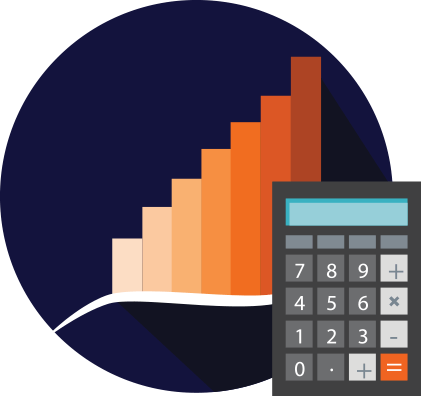Once you start investing, you need to figure out what type of investment account you want. As you look at investment accounts, you’ll find that they are generally divided into:
- Tax-advantaged
- Taxable
A good mix of tax-advantaged and taxable investment accounts can help you meet your various goals. Let’s examine these terms and how to use different accounts in your investment strategy.
Tax-Advantaged Investment Accounts
First of all, tax-advantaged accounts are designed to provide you with some type of tax benefit when you add money and invest. There are two main types of tax-advantaged accounts:
- Tax-deferred: These are accounts where you make contributions with pre-tax dollars. You don’t pay taxes on the money until you withdraw later. These accounts reduce your taxable income today.
- Tax-free: In general, these investment accounts make use of after-tax dollars. You pay your taxes and then contribute. However, with these accounts, your earnings grow tax-free, and you don’t pay taxes when you withdraw.
Examples of tax-advantaged investment accounts include 401(k)s, IRAs, and Health Savings Accounts (HSAs). The HSA is interesting because you receive a tax deduction for your contributions, and the earnings are tax-free as long as you spend the money on qualified medical expenses.
Limits to Tax-Advantaged Investment Accounts
Before opening a tax-advantaged investment account, you should understand some of the limits.
Most of these accounts come with contribution limits. You’re only allowed to set aside a certain amount of money each year. For example, you might only be able to set aside $6,000 a year in an IRA.
Additionally, most of these accounts have limits on withdrawals. If you don’t follow the withdrawal rules, you could pay a penalty on top of applicable taxes. For example, most retirement accounts require you to wait until age 59 1/2 to withdraw money without penalty. If you have an HSA, you could end up with a penalty if you don’t use the money for qualified expenses.
On top of that, it can be difficult to hold certain assets in a tax-advantaged account. There are special rules for holding precious metals and real estate in a retirement account. If you have a 401(k), you might be limited on your fund choices through the plan administrator. You can’t always invest in the things you want to with tax-advantaged accounts.
Finally, there might be income limits associated with different accounts. Roth IRAs don’t allow direct contributions unless you’re below a certain income threshold. If you have a Traditional IRA, you might be unable to deduct your contributions under certain circumstances.
While tax-advantaged investment accounts can be a good way to build future wealth tax efficiently, you do need to be aware of the limitations.
Taxable Investment Accounts
On the other hand, taxable accounts have fewer limitations, but you won’t get special tax treatment.
With a taxable account, you can hold any asset legal in the United States. It’s often easier to add cryptocurrencies, precious metals, special partnerships, real estate, and other alternative assets to your account when it’s taxable.
On top of that, you don’t have to worry about limits. You can put as much money as you want into a taxable investment account. Plus, you can withdraw the money whenever you want without paying additional penalties.
However, you do need to be aware of the tax implications of these investment accounts. When you sell assets and withdraw the money, you’ll be responsible for taxes on any gains you realize. Capital gains taxes are generally divided into:
- Short-term: Assets held for a year or less.
- Long-term: Assets held for more than a year (366 days or more).
Long-term capital gains taxes are generally lower than short-term taxes, which are charged at your regular tax rate.
Using Tax-Advantaged and Taxable Investment Accounts
When creating an investment strategy, using different types of accounts makes sense. You can use both tax-advantaged and taxable accounts to accomplish your goals.
For example, a tax-advantaged account is ideal for long-term goals like funding retirement. You can also squeeze extra tax efficiency when using an HSA for current and future medical costs.
On the other hand, a taxable investment account might be a good choice for other goals. Perhaps you want to build up a pool of money you can access during early retirement. Maybe you use the money to fund short-term goals, like travel.
If you’re unsure, you can speak with a financial professional to help you figure out a tax and investment strategy designed to help you meet your objectives.

